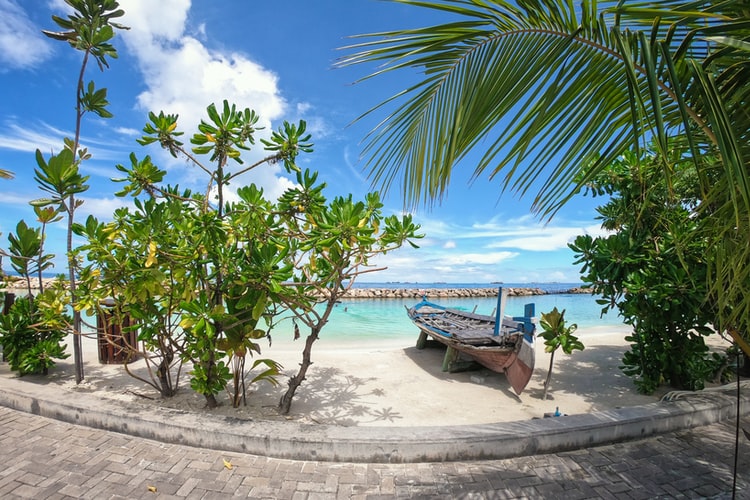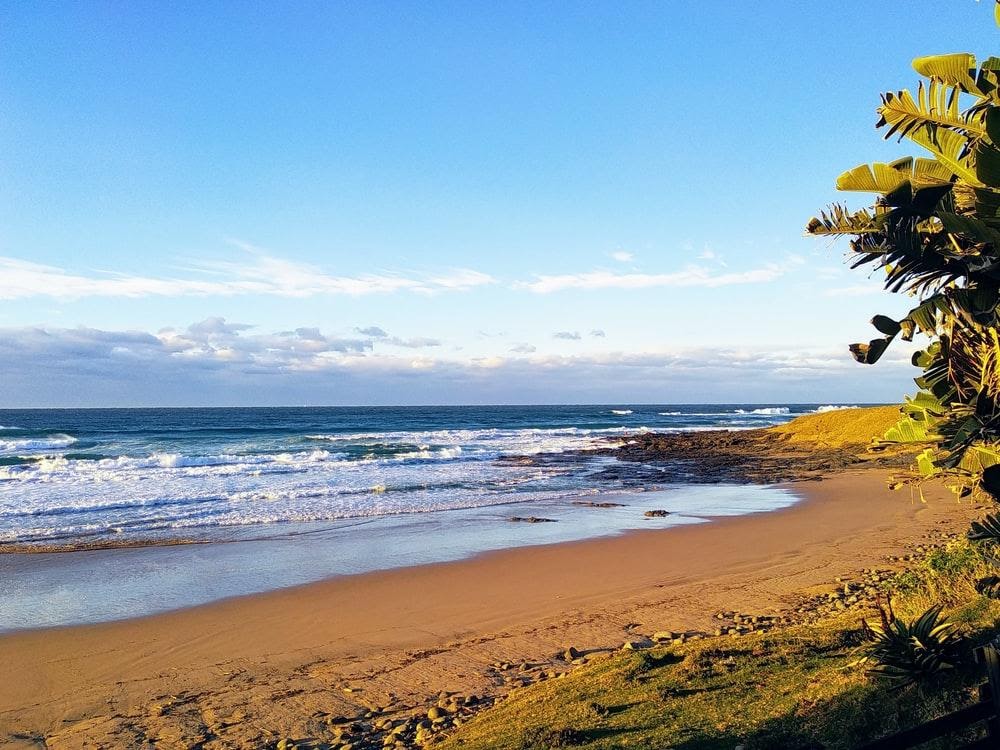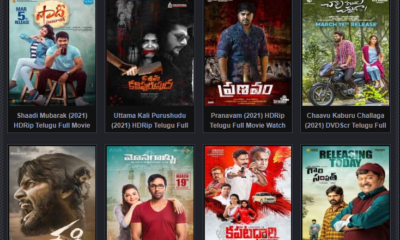Travel
Nag Tibba Trek – Everything You Need to Know

When seeking to escape from daily life and find solace in the splendour of nature, mountains are the most well-liked travel destination. To get such peace, Nag Tibba proves to be an alluring and ideal weekend trekking location. In the local Garhwali language, the first word in the name of this journey, “Nagg,” means “snake,” while the second word, “Tibba,” means “high or peak.” An old legend holds that Nag Tibba is actually “Naag Devta” hallowed home. Usually there are the peasants who gather here to pray for the safety of their cattle. Due to its elevation of 9,915 feet, the Nag Tibba Trek is one of the most well-known hikes near to Dehradun. This excursion, also known as the Serpent’s Trek, is unique in that it can be completed even in the winter, when most other treks are closed due to heavy snowfall.
Dehradun is the starting point for the Nag Tibba trek, however Mussoorie is also an option if you want to take in the restorative views at “the Queen of Hills.” From Nag Tibba, you may see some of the most breathtaking panoramas, including views of the Garhwal Himalayas’ entrancing snow-capped peaks Bandarpoonch, Kedarnath, Kala Naag, Swargarohini, and Chanabang.
Optimal Period to Visit Nag Tibba
Summer time in Nag Tibba
Summer indicates that the weather will be considerably more favourable for trekking and that the vistas will be beautiful. During the summer months of April to June, you can experience a steady cold wind to keep you cool. You may rest near natural water sources, and the dense forest cover provides plenty of shade.
You won’t feel the heat as much because the hike is easy. In fact, if the sky is clear, you’ll be able to see the beautiful Himalayas. Himalayan Leopards, Himalayan Black Bears, and other similar creatures may also be seen. These animals typically don’t bother hikers because they are in their native environment, and they also avoid the enthused crowds.
Additionally, Nag Tibba in the summer does not call for any heavy woollen clothing, but you should still pack some light woollen clothing just in case the night is chilly. You may enjoy distant views of the snow-capped Himalayas throughout.
Summer time temperatures in Nag Tibba
From April through June, the temperature at Nag Tibba ranges from 0 to 20 degrees Celsius. There will always be a nice breeze to keep you company.
In the monsoons, Nag Tibba
Even though the monsoon season may not appear to be the best time to go trekking, the environment comes to life during this time. You will be able to experience breathtaking views of the Doon Valley.
During the monsoon season, from July to October, you can enjoy the lush vegetation and breathtaking views. You can drink your coffee while watching the rain in a little hut. Because the monsoon season will welcome you with muddy and treacherous terrain, you will need to exercise extra caution and pack high-quality hiking clothes, footwear, and equipment.
The Himalayan mountains will be visible, but they will be constantly drenched in rain. The views from Nag Tibba during the monsoon are breathtaking and well worth the danger, although heavy rains can trigger landslides that block roads and cause traffic. Remember to bring your umbrellas and raincoats.
Monsoon temperatures in Nag Tibba
From July through September, the lowest and maximum temperatures at Nag Tibba are 3 and 19 degrees Celsius, respectively. It is strongly advised to bring monsoon clothing such as raincoats and umbrellas.
Wintertime in Nag Tibba
The best time of year to visit Nag Tibba is from October to March. Because the temperature in Nag Tibba drops at night, you need take extra precautions. The tranquilly and gorgeous snowfall in this valley make it well worth the price. Even if it is fairly cold and snowy throughout the winter, Nag Tibba’s solitude and tranquillity are well worth the effort. The need to transport thick wool clothing develops.
Throughout the winter, you can enjoy clear sky and stunning views of the Srikanth, Gangotri, Swargarohini, Bandarpunch, and Kedarnath peaks on the Nag Tibba Trek.
When camping along the woodland’s edge, you’d also have the company of chirping birds and the aroma of rhododendrons. Bring your cosiest, warmest garments if you wish to hike the Nag Tibba in the winter.
Winter, or between October and March, is always the best time to visit Nag Tibba because you may see the most spectacular snowfall.
Wintertime temperatures in Nag Tibba
During the winter months of November to February, the lowest temperature at Nag Tibba is -7 degrees Celsius, while the highest temperature is 9 degrees Celsius.
Nag Tibba Climate
The weather on the Nag Tibba hike is largely determined by the month you arrive. Although Nag Tibba Trek is open all year, the winter season (October to March) is always the finest time to visit Nag Tibba. You can, however, select different months.
Travel
Navigating the Expat Life: A Guide for Expatriés

Starting a new life is a thrilling but hard responsibility. Whether you’re moving overseas for personal, professional, or moot details, altering to life as an expat takes careful planning. We’ll cover many aspects of emigrant life in this full guide, giving helpful vision and useful information to help you get the most out of your time away.
Being an expatriate, or living overseas, is an exciting and difficult adventure that leads to fresh knowledge, cultures, and views. Whether you’ve chosen to go abroad for a job, learning, or personal development, adjusting to the difficulties of living as an expat demands mobility, courage, and an open mind.
This area provides expatriés with the required equipment to safely settle into their new homes, from navigating public transportation to using essential amenities.
Getting Ready to Move
Much preparation is necessary before you arrive at your new location. Everything from documentation and visa requirements to speaking ability and cultural acuity are addressed in this section. Knowing the practical aspects of moving can reduce stress and make it a seamless transition to living abroad.
Getting Started
Although moving to new work can be daunting, you can comfortably adapt if you know what to do. We’ll talk about getting a place to stay, creating a support system, and getting informed about the services and amenities that are offered by the area. Studying the essentials of daily life in your host nation, from procuring food to using subways, makes for a positive expat experience.
Developing Cultural Intelligence
Living in another country and seeing its culture is one of the most enjoyable parts of living overseas. Besides addressing the value of cultural ability, this part provides advice on how to promote intercultural understanding. Learning how to adjust to and take different facts of view recovers your expat experience and helps you build permanent networks with residents, from knowing new duties to greedy cultural shades.
Taking Care of Financial and Legal Issues
Taking care of the economic and legal positions of moving overseas takes careful preparation and attention to detail. We’ll go over things like international banking, taxes, health care, and insurance choices. Knowing the fiscal and legal terrain of your final nation is a must to protect your welfare and promise compliance with regional statutes.
Sustaining Emotional Health
Living far away from home can at times seem difficult or isolating, but if you want to thrive as an expat, you must put your emotional health first. This section provides tips on how to deal with cultural shock, deal with a feeling of home, and get help when you need it. Maintaining your mental and emotional well-being increases your resilience and happiness with living abroad, whether you choose to do this through hobbies, self-care routines, or relationships with other expats.
Taking Growth Opportunities
Living overseas has its challenges, but there also exists unequaled chances for both professional and private growth. A life-changing experience and lasting recollections can result from accepting the possibilities of your expat journey, whether it is by learning new skills, increasing your international network, or going to new places. You are urged in this part to embrace confusion, push yourself outside your comfort zone, and take benefit of any opportunity for growth.
Conclusion
Keep in mind that every step of your expat experience presents an opportunity for growth and education. Through careful planning, gaining cultural sharpness, and putting your health first, you can face the difficulties of living overseas with strength and self-assurance. Savor the diversity, treasure the moments, and enjoy the excitement of living overseas.
Travel
How to Plan a Honeymoon on a Budget

Organizing a wedding is a big outlay. Although it is once in a lifetime and you think it is worth it, there are also ways to reduce expenses. If you do not want to skimp on the banquet, you can do it with the honeymoon. And enjoy a honeymoon on a budget.
It is not necessary to choose a very expensive destination if it is not the moment. You will have time to make that trip in all that life together that awaits you. Nor do you carry souvenir bags for all your friends and family.
So, can you have a great honeymoon for little money? Of course!
In fact, the most expensive trips are not always the most enjoyed. Surely your parents or grandparents settled for a weekend away from home or a few days in the Canary Islands or Mallorca. And they have an unforgettable memory that they have told you over and over again.
A closer destination
Some couples believe that the further they go, the better the honeymoon will be. And that is not true at all.
It is true that there are incredible places on the other side of the planet. And probably your dream is to cross the pond even if you have to spend more than 10 hours on a plane.
However, the travel budget is more expensive due to transport costs. And logically, the further, the more it will cost.
If you now have a limited budget for your honeymoon, think about closer destinations. In Europe, there are countries with a lot of charm and perfect for a few days of relaxation, culture, or adventure. And even Spain has corners to discover that would surely surprise you.
Shorter vacations
The more days you are traveling, the more you will disconnect from everything. It is another myth that is not always fulfilled.
Some newlyweds spend two or three weeks getting to know the world. In the end, they arrive more tired than they left and do not enjoy it at all.
In a few days, you will be able to rest and enjoy yourself a lot. Of course, try to take at least a week, especially if you are a few hours away by plane.
Two trips are preferable. One after the wedding and one later than spending it all at a destination.
And if you have a low budget, your pockets will appreciate it.
Set a spending cap
We all know that the cost of travel is not just the price of the hotel and transportation.
Once at the destination, we usually make purchases, excursions, and other superfluous expenses that in the end double the initial cost or even more.
If that’s going to be a ruin, it’s best to set a maximum you can afford. It is not necessary to buy gifts for everyone. The trip is for you and the rest do not need to bring anything because it will also be noticeable in the weight of the suitcase.
Avoid the high season
Celebrating a wedding in the summer has many advantages. But also a drawback when it comes to the honeymoon.
And it is that in most destinations it is high season, and therefore, the prices are higher. A good option, if you want a specific place, is to postpone the trip for a time that is cheaper. That as long as the weather does not prevent it. In the off season, you can get good deals even on luxury rentals like Jamaica Villas. Sometimes, it is better to leave those days for later and after the wedding to focus on other things such as enjoying that new stage.
Organize it on your own
Have you thought about looking for everything on your own? Travel agencies provide security and in this type of trip many prefer not to risk.
But it is also true that these companies have to charge because they make a living from it. And also, everything that bears the nickname “honeymoon” or “honeymoon” is always more expensive.
If you are smart with tracking and shopping on the Internet, you can search for everything without hiring an agency.
It’s more of a hassle and involves time that you probably don’t have but you can also save a lot. Perhaps a friend or brother who is used to traveling a lot can help you. Or do it ahead of time before getting into the last-minute wedding preparations.
These are some ideas to fully enjoy a honeymoon despite having a limited budget. And if you still decide to postpone it, don’t worry. The important thing is the new stage that you start as a marriage. And that is priceless.
Travel
Best Beaches South Africa For Your Honeymoon

A honeymoon is a time for couples to enjoy each other’s company somewhere they can relax and have fun. This is a great time to enjoy the good things in life in the company of your loved one. That is why picking the perfect place to go is a crucial task to truly enjoy your time off. In this article, we list down some of the reasons why South Africa’s beaches should be where you spend your precious honeymoon. Ready? Read on!
Coffee Bay Beach
Located in South Africa’s Wild Coast, Coffee Bay Beach is a serene and subtle paradise perfect for newlyweds. This quaint stretch of pristine sandy beach is surrounded by scenic rolling hills and idyllic landscapes. A great way to spend a few days with your significant other just relishing in each other’s company.
Coffee Bay Beach is part of the rural town of Coffee Bay. It is located in the Eastern Cape Region of South Africa which the famed Nelson Mandela came from. Surfing is one of the best ways to enjoy the beach. The Wild Coast—where the beach can be found—is known for having consistently good surf. If you enjoy something calm and relaxing, a stroll through the mostly empty beach is the one for you.
Boulders Beach
Another hidden gem in South Africa is Boulders Beach. This pocket beach is named after two granite boulders that form an inlet. This small patch of powdery white sand is known for its tiny residents frolicking about. The beach is home to African Penguins native to Africa’s southern coasts (Namibia and South Africa). This small colony has settled in this small patch of the sandy beach back in the 1980s. Since then, the beach is designated as a protected area where the birds can live in peace.
Boulders Beach is a unique experience where you get to see real live penguins in action without needing to travel far. It is also close to most establishments with regular amenities nearby. If you and your partner love these adorable creatures, this beach is a must-visit.

Camps Bay Beach
Hailed as one of Capetown’s very best, This picturesque beach is postcard material. Camps Bay has some of the country’s best views. The white powdery sands meet the azure blue waters. Behind it is the majestic Twelve Apostles mountain—which is a part of the Table Mountain Complex in Cape Town. A few steps from the beach are the idyllic suburbs that add to the area’s rustic coastline vibes.
The beach is best known for its stunning sunsets which tourists from far and wide come to witness. The beach is one of the most popular during Valentines Day where couples from all over come to enjoy the romantic scenery and each other’s company. If you and your partner feel a bit romantic and don’t mind the crowd, Camps Bay Beach should be on your list.
Hout Bay Beach
This is another great beach in Cape Town. This seaside town, though residential, still maintains its rural vibes making it an idyllic coastal escape. The bay is known for its harbor which is one of the busiest fishing ports in the region. Here you get to see the Hout Bay Yacht club and a burgeoning food scene with its many restaurants.
Hout Bay Beach also has a well-known sand beach where locals and tourists alike come to enjoy the cool waters. As a natural bay, Hout Bay Beach is sheltered from the huge waves unlike other beaches in South Africa. Because of this, more laid-back activities like stand up paddleboarding are quite popular.
Stand up paddleboarding or SUP is a sport that combines the mobility of a kayak and the freedom and flexibility of surfing. This boardsport originated in Hawaii in the 20th century. It has then spread throughout the globe as its popularity grew. Because it can be enjoyed without waves, SUP is a great bonding activity with friends and family. It is easy to learn making this sport widely accessible. You can also enjoy SUP by incorporating yoga in it. If you love yoga, you need to try SUP Yoga. It is a great water sport that can help improve your fitness level and your health too.
Kraal Bay Beach
This quaint beach is another peaceful and calm beach perfect for some alone time with your SO. Located in the Langebaan Lagoon in the Western Cape, the beach is part of the bigger West Coast National Park. Though the park is a popular tourist magnet, Kraal Bay isn’t as crowded as the other popular beaches in the country.
The lagoon is perfect for fishing and angling, kayaking, stand up paddleboarding and Kayaking. The area is also frequented with houseboats most of the year. All of which adds to the calm and tranquil charm of Kraal Bay.
Kogel Bay Beach
In South Africa, you never run out of breath-taking beaches to discover. One of which is Kogel Bay. Kogel Bay’s name in Afrikaans, Koeelbaai, means Cannonball Beach which is said to be a reference to the small round stooges scattered along the beach. The beach is a bit on the rugged side with minimal development. But it more than makes up for it with its sheer natural beauty.
Along the beach are several caves where you can set up camp to hide from the harsh sun and strong winds. With the winds come huge waves perfect for surfing. Swimming is highly discouraged though as there is a strong current that can sweep inexperienced swimmers off course. If you love spending some alone time with your loved one amidst the wild beauty of nature, this is a great choice.
Muizenburg Beach
Last but not least is one of South Africa’s famous beaches, Muizenburg Beach. This incredibly long stretch of white sandy beach forms part of the False Bay Coast. This Family-friendly is one of the country’s Blue-Flag Beaches. Due to its popularity, many establishments have set up shop in the area. This makes it a great way to experience the beach without going far from civilization. Learn to surf in this world-class beach or see the colorful Victorian beach cottages that line the shore. Whichever kind of adventure you and your partner seek, you will surely find it here in Muizenburg.
-

 Apps1 year ago
Apps1 year agoWhy is Everyone Talking About Hindi Keyboards?
-

 Social Media1 year ago
Social Media1 year agoWho is Rouba Saadeh?
-

 Apps1 year ago
Apps1 year agoThings you need to know about Marathi keyboard today
-

 Apps1 year ago
Apps1 year agoStuck with Your default Bangla keyboard? Isn’t it time for a change?
-

 Games1 year ago
Games1 year agoTop 7 Popular Puzzle and Card Games for Relaxing Your Brain on Mobile, Featuring Solitaire
-

 Social Media1 year ago
Social Media1 year agoMati Marroni Instagram Wiki (Model’s Age, Net Worth, Body Measurements, Marriage)
-

 Entertainment1 year ago
Entertainment1 year ago12 Online Streaming Sites that Serve as Best Alternatives to CouchTuner
-

 Entertainment1 year ago
Entertainment1 year agoMovierulz Website: Movierulzz 2021 Latest Movies on Movierulz.com
